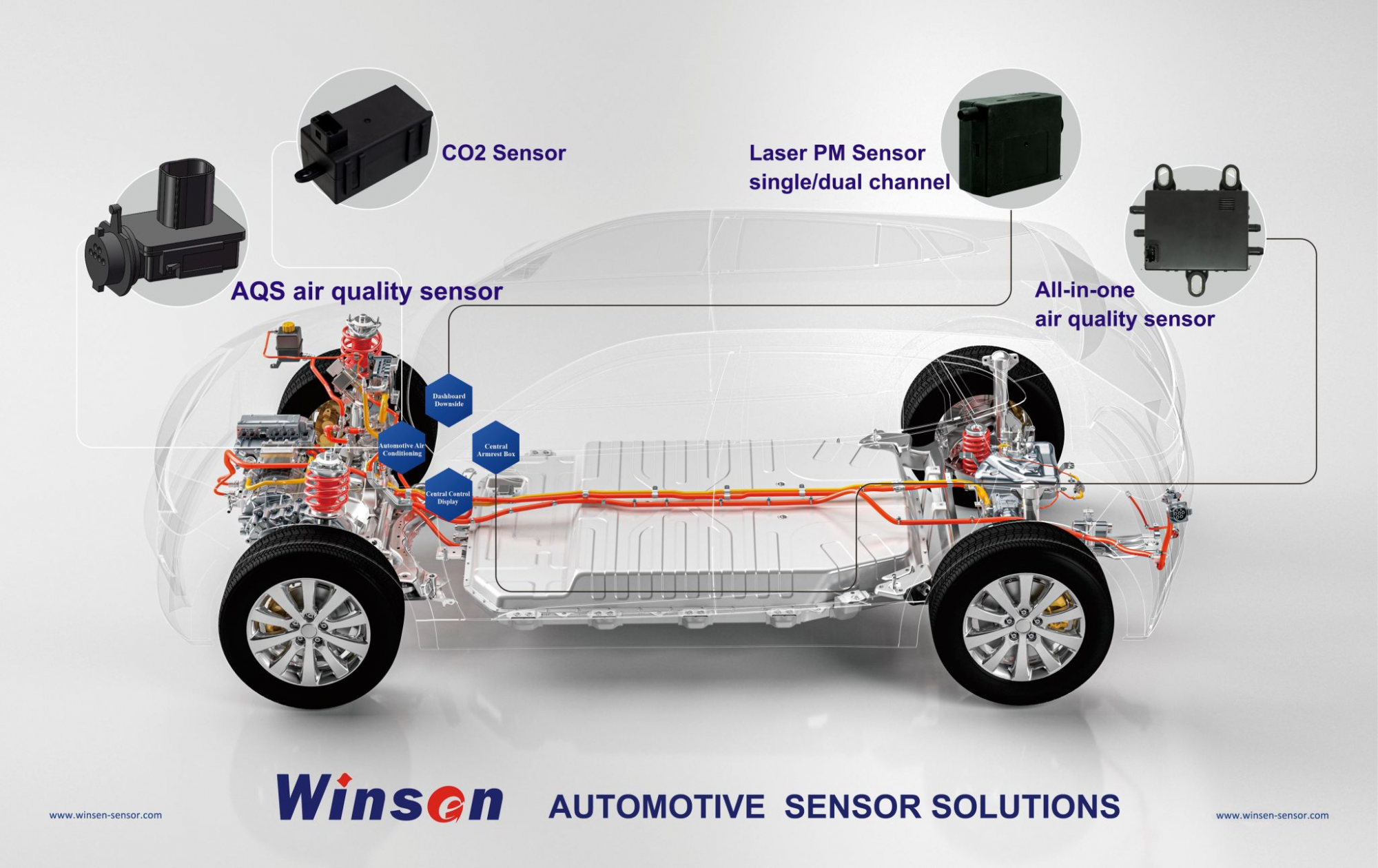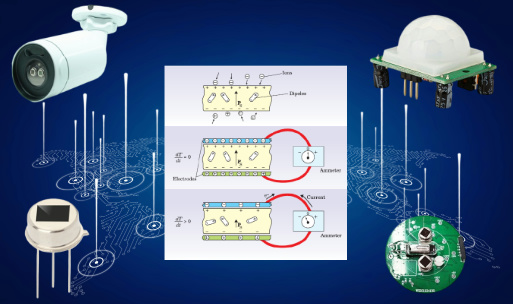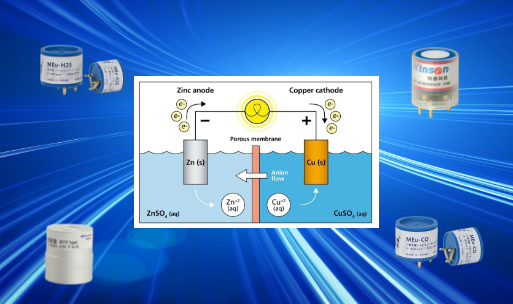Monitoring CO2 Levels in Vehicles Ensuring Air Quality and Passenger Safety
As we spend a considerable amount of time in cars, it is essential to be aware of the air quality inside the vehicle. Carbon dioxide (CO2) levels can rise in enclosed spaces, including cars, and have potential implications for our health and well-being. In this article, we will explore the importance of monitoring CO2 levels in vehicles, the potential risks associated with elevated concentrations, and the available solutions to maintain optimal air quality.
The Need for Monitoring CO2 Levels in Vehicles
Understanding the the sources of CO2 in car interiors
Human respiration: When we breathe, we exhale CO2. So, when there are passengers in the car, their exhaled breath increase the CO2 concentration. The more passengers there are, the higher the CO2 concentration can become.
Refrigerant leakage R744-CO2: R744 is an emerging environmentally friendly refrigerant which is carbon dioxide (CO2). R744 has a very low GWP and lower cost. Compared to traditional refrigerants, carbon dioxide has a lower boiling point at standard atmospheric pressure, making it more efficient at heating in cold weather. But the risk of refrigerant leakage is greater, and the requirements for leakage volume are more stringent. This requires finding effective methods to accurately measure the leakage volume of carbon dioxide heat pump systems..
External air pollution: In areas with heavy traffic or high pollution levels, there might be an increased presence of CO2 from the surrounding environment. This can seep into the car, especially if the windows are open or the ventilation system is not effective at filtering the outside air.
Recognizing the symptoms and impact of elevated CO2 levels on occupants' health

Headache is one of the most common symptoms of high CO2 levels is experiencing persistent headaches. Elevated CO2 concentrations can make you feel excessively tired and sleepy while driving. High CO2 levels can make it harder to breathe, causing a feeling of breathlessness or discomfort. Some people may experience dizziness when CO2 levels are high.
Drowsiness and Fatigue can make drivers less alert and increase the risk of accidents. It's like feeling sleepy after a big meal!
Headaches and Discomfort: Elevated CO2 levels can cause headaches and general discomfort for the occupants.
Impaired Cognitive Function: Too much CO2 in the air can affect our cognitive abilities, such as memory, attention, and decision-making. It can make it harder to focus and process information effectively.
If you notice these symptoms while driving, it's essential to address the situation by improving the air quality inside the car. Open the windows for fresh air or use the ventilation system to increase air circulation. If symptoms persist or worsen, it's best to find a safe place to stop and seek assistance if needed.
Preventing driver fatigue and maintaining alertness
Make sure you get enough sleep before embarking on a long drive. Plan your journey with regular breaks to stretch your legs, get some fresh air, and take a short rest. This can help combat fatigue and keep you alert throughout the trip. Drink plenty of water to stay hydrated, as dehydration can contribute to feelings of fatigue. Also, avoid consuming heavy meals before driving, as they can make you feel drowsy. It's like keeping yourself refreshed and energized!
Monitoring CO2 Levels in Vehicles is an efficient way to alarm the driver to take some measures such as ventilating the cabin air or stop for a rest.
Built-in CO2 monitoring systems in modern vehicles
Having a built-in CO2 monitoring system can be quite helpful as it provides immediate feedback on the air quality and alerts the driver if the CO2 levels exceed a certain threshold.
Built-in CO2 monitoring systems typically use sensors strategically placed within the vehicle to detect the concentration of CO2. The sensors continuously measure the CO2 levels and provide feedback to the vehicle's onboard computer system. This information can then be displayed on the car's dashboard or infotainment system, allowing the driver to monitor the air quality inside the vehicle.
Portable CO2 detectors
If your vehicle does not have a built-in CO2 monitoring system, there are other options available, such as portable CO2 detectors or smart phone apps that can help you monitor the CO2 levels inside your car.
Winsen CO2 detection sensor solutions for vehicles

ZMHS10- All-in-one Air Quality Sensor
- PM2.5, CO2, AQS, Temperature and humidity
- PM2.5:0~1000μg/m³
CO2:400~10000ppm
AQS:CO: 1~5000ppm, NOx: 0~10ppm, NH3: 1~300ppm
Temperature:-40~125℃
Humidity:0~100%RH
- Read More
More Air Quality Sensor Solutions from Winsen

Benefits of Monitoring and Maintaining CO2 Levels in Vehicles
- Enhanced Alertness and Safety, reduces the chances of accidents caused by drowsiness or impaired cognitive function.
- Ensure a Healthier Environment inside the vehicle. Proper CO2 monitoring and maintenance contribute to a more comfortable driving experience, we can enjoy a fresh and pleasant environment during our journeys.
- Energy Efficiency: When CO2 levels are within the recommended range, it indicates efficient ventilation and air circulation and help optimize the car's breathing to conserve energy.
- Environmental Consciousness: Elevated CO2 levels may be indicative of poor fuel combustion or leaks in the exhaust system, which contribute to air pollution. Maintaining optimal CO2 levels helps reduce our carbon footprint and promotes a greener driving experience.
Conclusion
Monitoring and maintaining CO2 levels in vehicles is crucial for ensuring optimal air quality, driver alertness, and passenger comfort. By understanding the risks associated with elevated CO2 concentrations and implementing effective monitoring systems or devices, we can take proactive steps to reduce exposure and promote a healthy driving environment. Prioritizing air quality in vehicles contributes to safer and more enjoyable journeys for everyone on the road..








